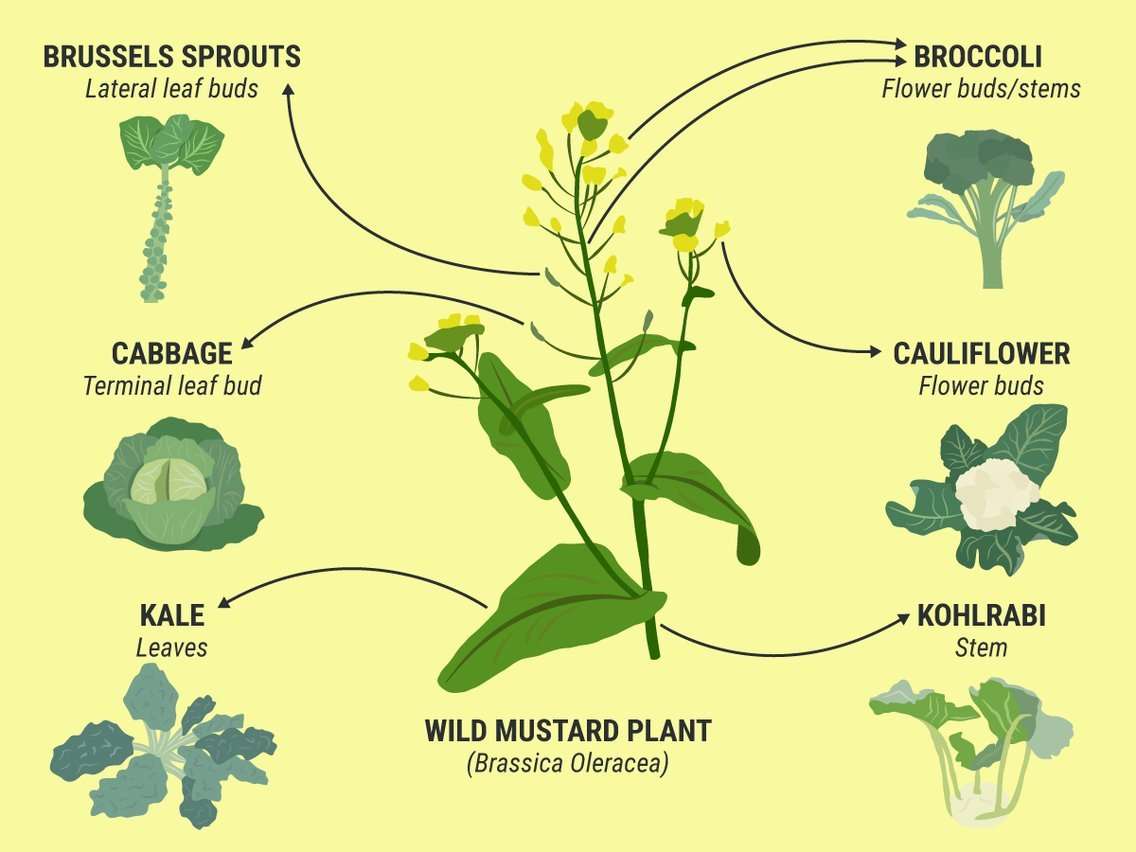You may never have heard of the plant Brassica Oleracea, but you've definitely eaten it.
Six vegetables you can find in any grocery store and which most people eat on a regular basis are actually all from this one plant. Over the last few thousand years, farmers have bred Brassica Oleracea into six "cultivars" that eventually became many of the vegetables we eat:
Brassica is also known as the wild mustard plant.
"The wild plant is a weedy little herb that prefers to grow on limestone outcroppings all around the coastal Mediterranean region," Jeanne Osnas, a researcher at Purdue University who blogs as "The Botanist in the Kitchen," writes in a blog post about Brassica Oleracea. "It is a biennial plant that uses food reserves stored over the winter in its rosette of leaves to produce a spike of a few yellow flowers at the end of its second summer before dying. Those nutritious leaves make its domesticated derivatives important food crops in much of the world now."
This one plant was selectively bred over hundreds of years to create dozens of wildly different vegetables. By selecting and breeding plants with bigger leaves, or larger buds, the different cultivars (also known as subspecies) were created.
The Botanist in the Kitchen Several Brassica Oleracea cultivars on display.
Kale, collard greens, and Chinese broccoli were created by making the leaves of the ancestor plant's leaves bigger, and were the first brassica domesticated, sometime before 300 BCE. Collard greens were developed in Europe, while Chinese broccoli was domesticated in China.
Red, green and savoy cabbages were created from a kale cultivar (likely the European collard greens) in the 1200s by selecting for a large terminal bud - the growing end at the top of the plant. The leaves are tightly wound around a short, wide stem (the cabbage's core).
Brussels sprouts are like tiny cabbages, except they grow from the buds along the plant's stem. They first hit the scene in the 1200s as well.
Kohlrabi was created by selecting for a thicker stalk in a kale plant around the 1400s.
Broccoli was created from a kale predecessor in the 1500s by selecting for the larger flower clusters, which are then harvested before they bloom. Cauliflower was developed from one of hundreds of broccoli varieties.
The amazing evolution of Brassica Oleracea just goes to show: Humans have been tinkering with the genetics of our food for much longer than we've been creating what are now known as genetically modified foods, or GMOs. These new lab techniques just let us do it in a more precise and directed way.
Next time you bite into a broccoli stalk, take a second to appreciate the magnificence and deliciousness of human ingenuity. You can read more about the evolution of Brassica Oleracea at The Botanist in the Kitchen.

forgreatnessalways on May 7th, 2019 at 14:12 UTC »
I have this idea in my head that won’t go away. Basically, I want somebody to genetically engineer heads of iceberg lettuce to grow in the same way as Brussels sprouts. Think about it, tiny heads of iceberg lettuce you can just pop in your mouth as a nice, refreshing snack. Eating the crisp, sweet lettuce balls will be like walking through the cold mist of a waterfall on a spring day. If I don’t get to experience this culinary delight before my death, I can’t consider my life truly lived.
skankingmike on May 7th, 2019 at 13:57 UTC »
https://en.m.wikipedia.org/wiki/Brassica_oleracea
They're not created from the wild mustard plant.. they're created from wild sea cabbage from the shores of the Mediterranean and an area in China.
They're related to the mustard plant. This article is bad.
It's the Brassica Genus..
like Homo Genus. Or Solanum genus which has the tomato and potato in it.
iia on May 7th, 2019 at 13:11 UTC »
Thank you, wild mustard plant. And thank you, too, selective breeders.
You've made my meals healthier and more delicious.